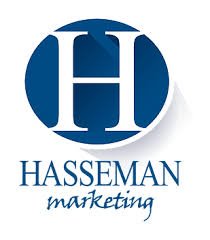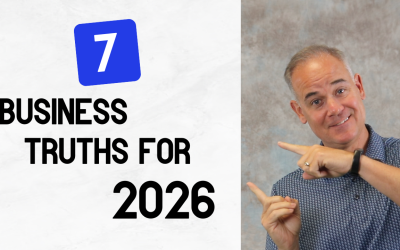At a recent SHRM event in Ohio, we had the opportunity to talk with HR professionals and leaders from all around the region. While I always enjoyed these conversations, one interaction stuck in my mind. The HR leader was one that wanted to do more to show appreciation to her team. However, the owner of the company generally did not want to spend any money.
“How can I convince my owner that we NEED to spend more money on appreciation and recognition?”
In other words, let’s make the business case for appreciation in business.
The Business Case For Appreciation
Employee retention is particularly important in the manufacturing industry, especially for frontline positions, because it helps with business costs in several ways:
Reduced Hiring and Onboarding Costs
High turnover means the organization needs to repeatedly spend on recruiting, interviewing, and hiring new staff. For frontline manufacturing roles, the costs include advertising, recruitment fees, and staff time dedicated to the hiring process. Retaining employees lowers these direct costs.
Lower Training and Development Expenses
In manufacturing, onboarding and training for frontline roles can be intensive. If employees leave before the 18-month mark, the business must reinvest in training new hires. Keeping employees in place reduces the need for frequent training sessions and allows resources to be focused on more strategic skill development.
Increased Productivity and Efficiency
Employees in frontline roles become more efficient over time as they gain experience and familiarity with processes. Retaining workers beyond the 18-month period means they can operate at higher productivity levels, make fewer errors, and contribute more effectively to meeting production goals. Replacing these experienced employees can cause temporary slowdowns and a dip in productivity.
Productivity improvements come from employees gaining experience and efficiency over time. Let’s examine the potential productivity gains and cost savings:
A. Increased Efficiency
- Retained employees typically get better at their jobs over time, producing more units per hour compared to new hires.
- Formula: Productivity Gain=(Experienced Worker Output−New Worker Output)×Work Hours per Day\text{Productivity Gain} = (\text{Experienced Worker Output} – \text{New Worker Output}) \times \text{Work Hours per Day}
- If an experienced worker produces 12 units per hour compared to a new hire’s 9 units per hour, over an 8-hour shift, the experienced worker produces 24 more units per day.
B. Revenue Impact
- Formula: Increased Revenue=Productivity Gain×Price Per Unit\text{Increased Revenue} = \text{Productivity Gain} \times \text{Price Per Unit}
- With a $50 price per unit, this productivity improvement translates to an additional $1,200 in revenue per day from each retained worker.
C. Cost of Errors and Waste
- New hires may make more errors, leading to rework or wasted materials. Retained, experienced workers make fewer mistakes.
- Formula: Cost Savings from Fewer Errors=(Error Rate for New Hires−Error Rate for Experienced Workers)×Cost of Rework or Waste\text{Cost Savings from Fewer Errors} = (\text{Error Rate for New Hires} – \text{Error Rate for Experienced Workers}) \times \text{Cost of Rework or Waste}
- If new hires have a 5% error rate, but experienced employees have only a 2% error rate, and the average rework costs $100 per unit, retaining employees saves significant money over time.
How Retention Helps:
By keeping employees past the 18-month mark, their productivity increases, they make fewer errors, and overall output improves—driving higher revenues and lowering costs from mistakes or inefficiencies.
Improved Morale and Team Cohesion
Frequent turnover disrupts team dynamics and can lower the morale of remaining staff, making them less engaged and increasing the risk of further turnover. Stable teams work more efficiently and are more motivated, reducing absenteeism and avoiding the indirect costs of low engagement.
Opportunity for Internal Advancement
Since your frontline roles have a clear pathway for advancement after 18 months, retaining employees allows you to promote internally, which is often less costly than hiring external talent for more senior roles. This internal movement creates a culture of growth and motivates new hires to stay longer.
Reduced Risk of Downtime
Manufacturing lines depend heavily on consistent staffing. High turnover can lead to skill gaps, which increase the risk of costly downtime or quality issues. Retaining employees ensures that production lines continue running smoothly.
When employees leave, you may face temporary gaps in staffing, leading to production slowdowns or complete stoppages. Here’s a step-by-step way to estimate the costs associated with turnover and downtime:
A. Lost Production Output
- Formula: Lost Output=Daily Production Output (Units)×Days of Downtime\text{Lost Output} = \text{Daily Production Output (Units)} \times \text{Days of Downtime}
- For example, if a manufacturing line produces 500 units per day and turnover leads to 2 days of downtime, the lost production would be 1,000 units.
B. Revenue Impact
- Formula: Lost Revenue=Lost Output×Price Per Unit\text{Lost Revenue} = \text{Lost Output} \times \text{Price Per Unit}
- If each unit generates $50 in revenue, losing 1,000 units would result in $50,000 of lost revenue.
C. Downtime Costs
- Downtime costs include both the opportunity cost of lost production and the fixed operational costs (e.g., utilities, and equipment leases) that continue even if the line isn’t producing.
- Formula: Downtime Costs=(Fixed Daily Operating Costs+Lost Revenue)×Number of Downtime Days\text{Downtime Costs} = \left( \text{Fixed Daily Operating Costs} + \text{Lost Revenue} \right) \times \text{Number of Downtime Days}
- For instance, if daily operating costs are $10,000, and you have 2 days of downtime, total downtime costs could exceed $70,000 ($50,000 in lost revenue + $20,000 in operating costs).
By retaining trained employees, you reduce the risk of understaffing and avoid these costly interruptions. So there you have it! This is the business case for showing your team appreciation. Not only will it make your organization a better place to work, it will save/make you money in the process!
Want to improve your hiring and retention? Check out our HR Hiring Playbook! Get that here for FREE.





